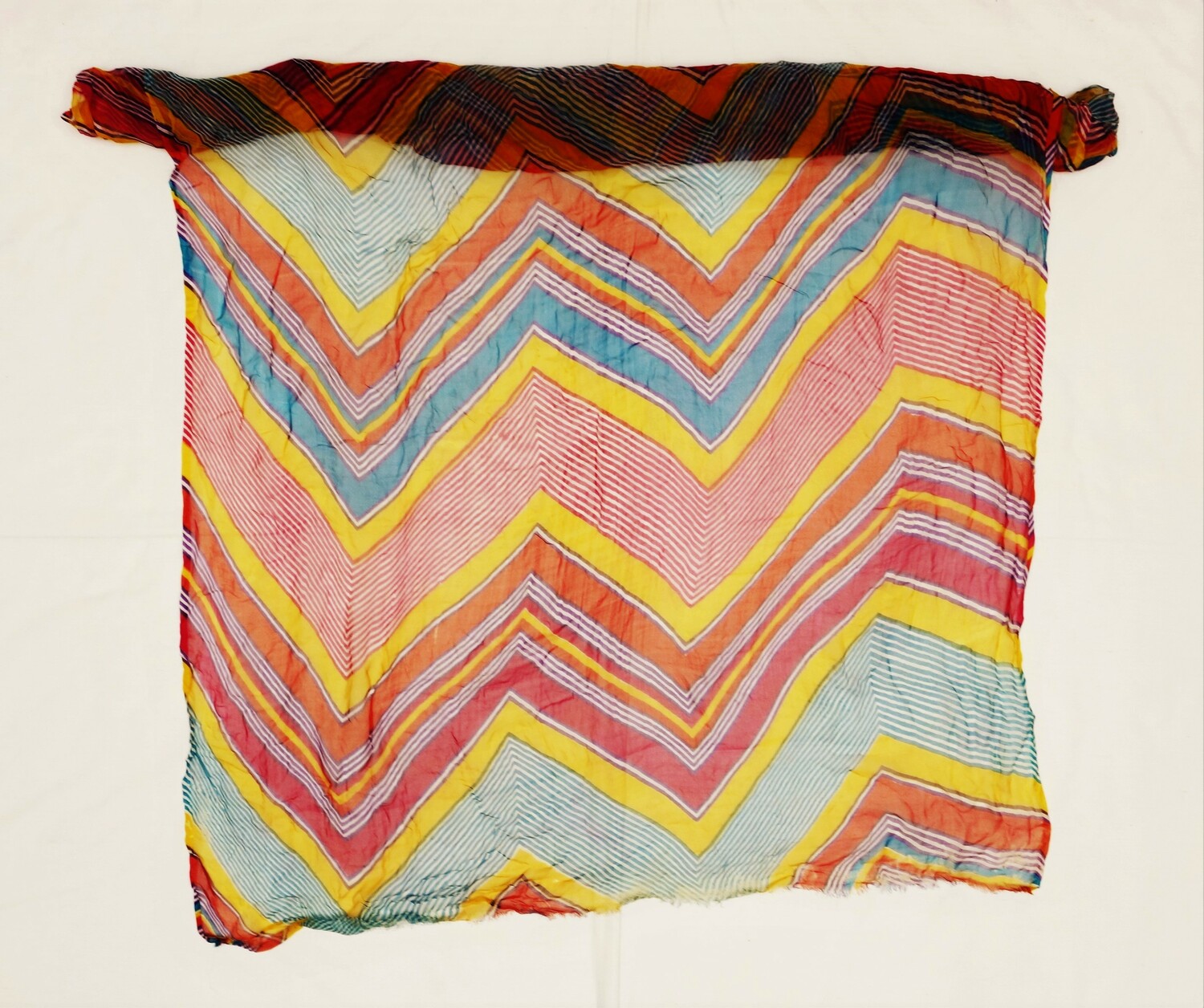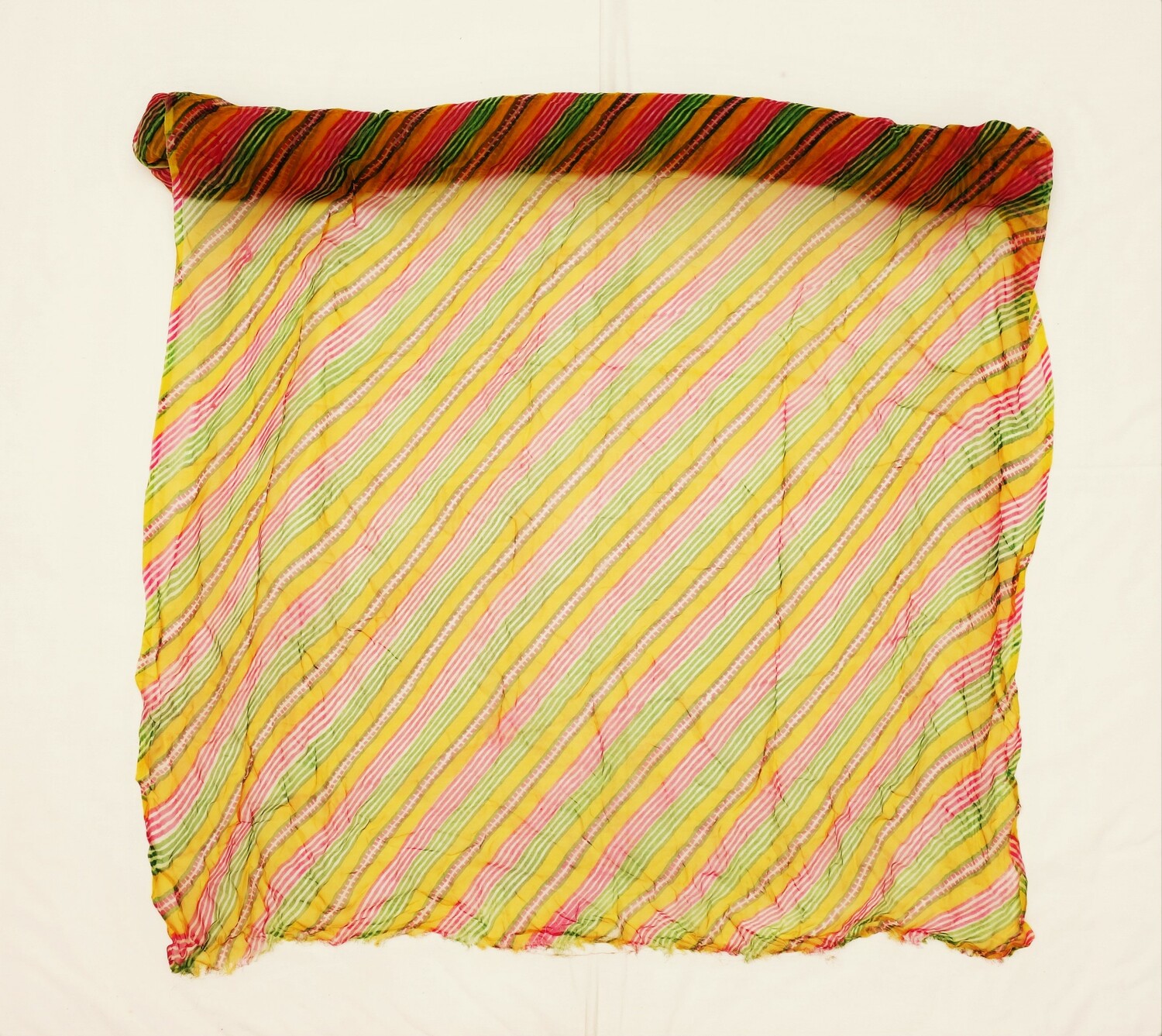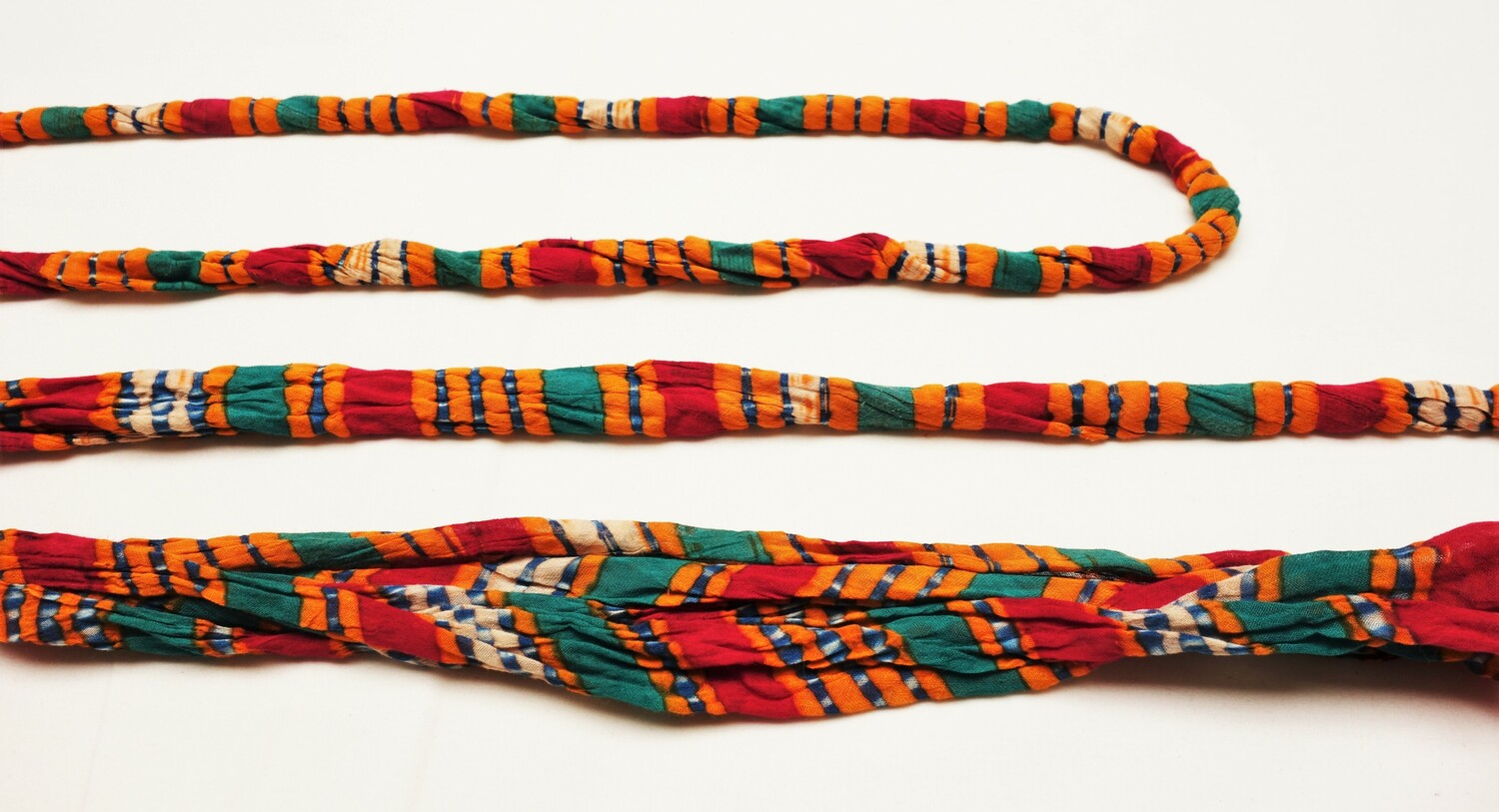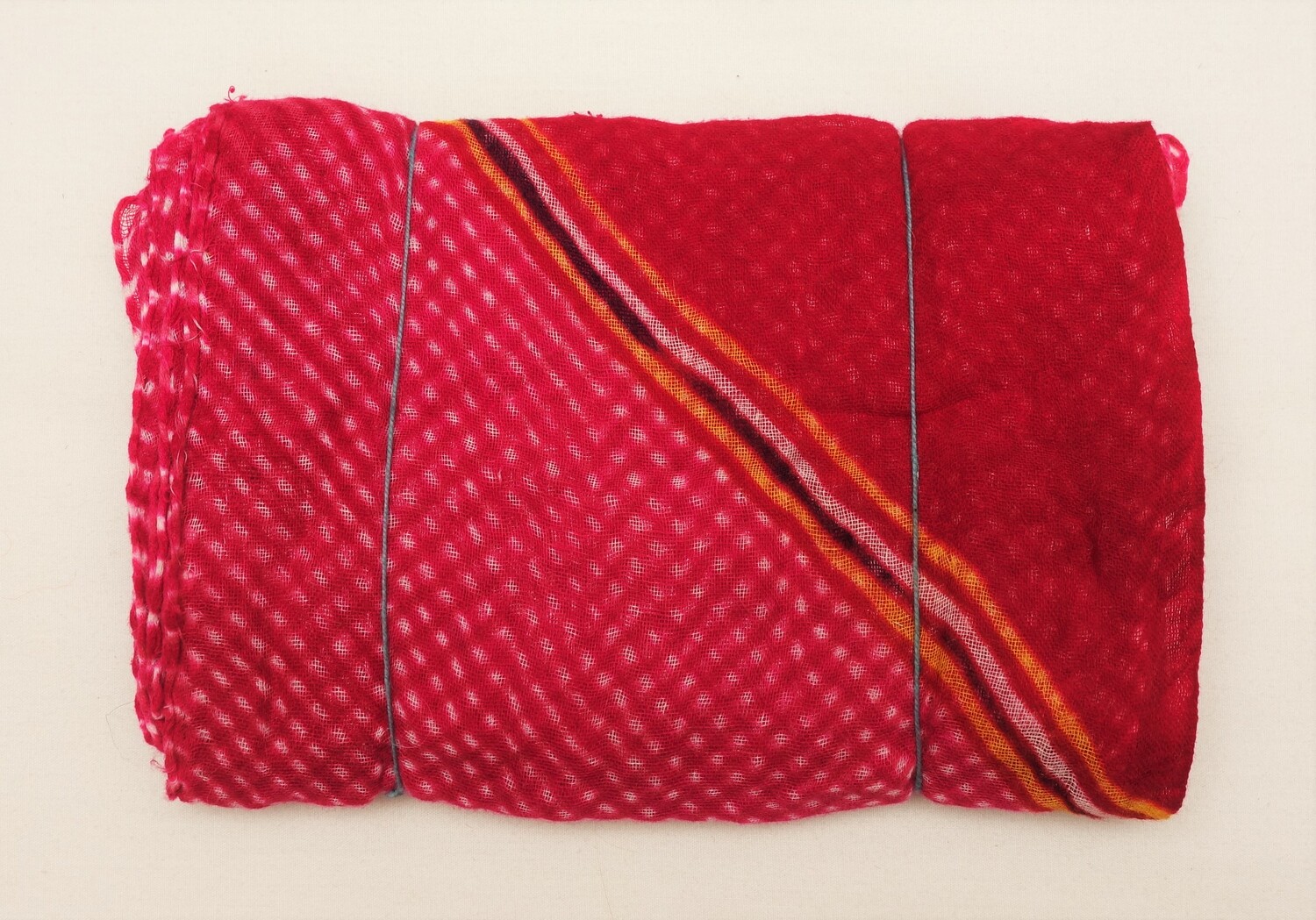
She is a textile artist and designer who, when she was a student, became fascinated by resist-dying techniques, especially batik from Indonesia. She went to various places in South and Southeast Asia to learn more about the technique by working in various batik ateliers.
It is not surprising, therefore, that her collection of textiles includes many pieces of batik, ikat, leheria, plangi and tritik, which were bought in India and Indonesia in the 1970s, 19080s and 1990s. We have nearly finished cataloguing the 170+ items and they should all be online within a couple of weeks.

This type of cloth is particularly associated with the Rajasthan towns and cities of Jaipur, Jodhpur, Nathdwara and Udaipur. The pieces now in the TRC Collection were bought in Jaipur and Udaipur in 1980.
Leheria (laharia, leheriya) is a Rajasthani word that means ‘wave’ and refers to a form of resist dyeing associated with fine, open weave cotton or silk materials such as chiffon, georgette and cheese cloth.
 The cloth is rolled diagonally from one corner to the opposite and then bound at regular intervals in order to produce diagonal stripes.More specifically it is a type of tie-and-dye in which a length of cloth is folded in a concertina-manner in a diagonal direction from one corner of the cloth to the opposite corner. It is bound at regular intervals with a thick, cotton thread in order to prevent the dye from colouring the ground material under the thread. The cloth is bound at different intervals and dyed again. The process is repeated time and again according to the range and number of coloured stripes required.
The cloth is rolled diagonally from one corner to the opposite and then bound at regular intervals in order to produce diagonal stripes.More specifically it is a type of tie-and-dye in which a length of cloth is folded in a concertina-manner in a diagonal direction from one corner of the cloth to the opposite corner. It is bound at regular intervals with a thick, cotton thread in order to prevent the dye from colouring the ground material under the thread. The cloth is bound at different intervals and dyed again. The process is repeated time and again according to the range and number of coloured stripes required.
The dyeing process goes from light to dark colours, so it may start off with a white ground, be tied and dyed yellow, then green, and red before ending with dark blue. A lengthy process!

A ‘good’ piece of leheria, for example, will include five or more distinct colours, which are used to create a series of geometric patterns based upon diagonal lines of varying widths. Leheria is traditionally sold still rolled up with only a small section of the cloth unrolled, so a customer could see the final pattern (TRC 2022.2120).

The traditional attire for a Rajasthani woman includes a skirt (ghagra), blouse (choli, kanchli or kurti), as well as an odhni (chunar) or long veil (these are about 200 x 110 cm in size), which normally has one end tucked in the wearer’s skirt and then the rest of the material is wrapped around the body and draped over the head in various manners. All three of these garments are often made from a leharia or mothra cloth.
By the mid-20th century leheria were also being made for the much longer sari, which is associated with women’s attire from other parts of India. There are two leheria saris (TRC 2022.2118 and TRC 2022.2119) in the Spée collection, which are 488 x 111 cm and 505 x 118 cm in size respectively. One (TRC 2022.2118) has a zig-zag pattern in diagonal stripes in yellow, green, magenta, blue and purple on a white ground, while the other (TRC 2022.2119) has diagonal stripes in yellow, magenta, turquoise, dark blue and white.

Leheria cloth is also used for men’s headwear (pagari), especially turbans made from rolls of cloth, which can be up to two metres long and if unrolled about 20 cm wide. One of the textiles (TRC 2022.2121) in the Spée collection has a label describing it as a ¼ length of a turban piece and still rolled ready for making into some form of turban. In addition there is a another piece (TRC 2022.2122) with the small check pattern mentioned above called mothra, as well as a gold thread border. This form of cloth would have originally been more expensive than an ‘ordinary’ leheria.
During the latter half of the twentieth century this form of cloth was also being used to decorate the shalwar kamiz (trousers and shirt) outfits worn by both men and women, and women’s saris, as well as a range of other garments and accessories such as bags, scarves and shoes.
Gilian Vogelsang-Eastwood, 4 August 2022










